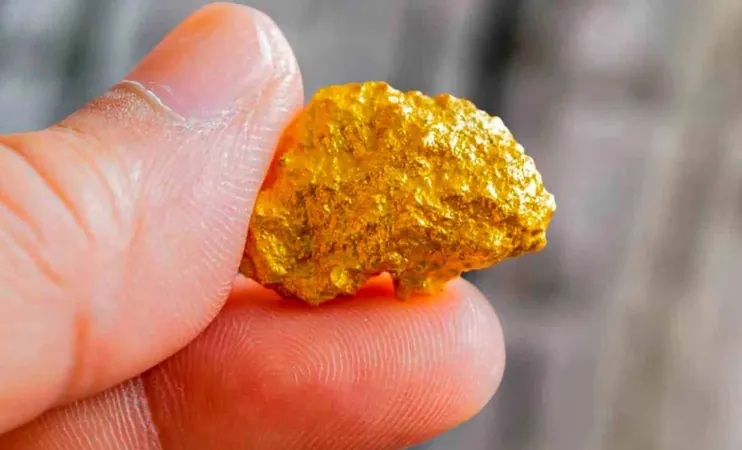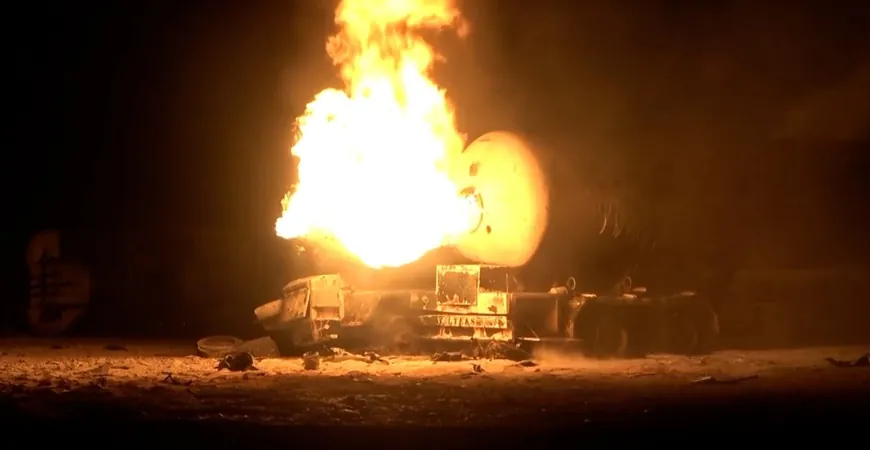
Unlocking Hidden Riches: The 450mg of 22-Carat Gold in Our Discarded Electronics!
2025-04-13
Author: Jessica Wong
Your Trash Could Be Worth a Fortune!
Every year, millions of us mindlessly toss away old electronics, unaware that we're discarding hidden treasures—22-carat gold! Recent research from ETH Zurich in Switzerland has revealed a groundbreaking eco-friendly method to reclaim this golden bounty from electronic waste, paving the way for a greener future and transforming our approach to e-waste.
The Shocking Amount of Gold in E-Waste
When gadgets malfunction or become outdated, they often meet an untimely end in the trash, contributing to a staggering 50 million tons of electronic waste generated globally each year. Alarmingly, these discarded devices are packed with valuable gold, particularly within their circuit boards. A single ton of e-waste can yield between 300 to 400 grams of gold, dwarfing the quantities generally extracted from traditional mining.
Why Current Extraction Methods Are Failing Us
Unfortunately, most of this precious metal ends up rotting away in landfills. Traditional gold extraction methods rely on harmful chemicals like cyanide and mercury, which not only come with a hefty price tag but also inflict serious environmental damage, amplifying the unsustainability of current practices.
Revolutionizing Recovery with Cheese!
ETH Zurich's ingenious new method offers an exciting, cleaner alternative. At the heart of this innovative technique is a sponge-like material crafted from protein fibrils derived from whey—the leftover product from cheese production. These eco-friendly sponges can efficiently trap gold ions from disassembled electronic parts.
Turning Waste into Solid Gold!
Once the gold is absorbed, it's transformed into solid nuggets of 22-carat gold through a heat treatment process. Astoundingly, just 20 circuit boards can yield around 450 milligrams of pure gold! This breakthrough not only provides an environmentally friendly means of gold extraction but also creatively repurposes agricultural waste, alleviating pressure on multiple industries.
A Step Towards a Circular Economy
But the benefits of this discovery extend well beyond gold. Electronic devices also host other valuable metals like nickel, copper, and palladium, which can be extracted using advanced techniques such as pyrometallurgy and hydrometallurgy. When integrated with ETH Zurich's method, these strategies could greatly enhance the efficiency and sustainability of recycling electronic components.
Recycling Potential: An Untapped Goldmine
Currently, about 80% of global e-waste isn’t recycled, as reported by France Live—a staggering missed opportunity for both the environment and the economy. By unlocking more resources from discarded gadgets, we can significantly decrease our dependence on environmentally damaging mining operations and foster a circular economy, prolonging the lifecycle of our precious materials.
A Cleaner Future Awaits!
This Swiss innovation signifies a major paradigm shift in our perception of e-waste, urging us to see it not as trash but as a rich source of valuable materials. Unlike conventional mining, this eco-friendly method eschews toxic chemicals and poses minimal environmental risks, turning what would be waste into a resource for the future.


 Brasil (PT)
Brasil (PT)
 Canada (EN)
Canada (EN)
 Chile (ES)
Chile (ES)
 Česko (CS)
Česko (CS)
 대한민국 (KO)
대한민국 (KO)
 España (ES)
España (ES)
 France (FR)
France (FR)
 Hong Kong (EN)
Hong Kong (EN)
 Italia (IT)
Italia (IT)
 日本 (JA)
日本 (JA)
 Magyarország (HU)
Magyarország (HU)
 Norge (NO)
Norge (NO)
 Polska (PL)
Polska (PL)
 Schweiz (DE)
Schweiz (DE)
 Singapore (EN)
Singapore (EN)
 Sverige (SV)
Sverige (SV)
 Suomi (FI)
Suomi (FI)
 Türkiye (TR)
Türkiye (TR)
 الإمارات العربية المتحدة (AR)
الإمارات العربية المتحدة (AR)